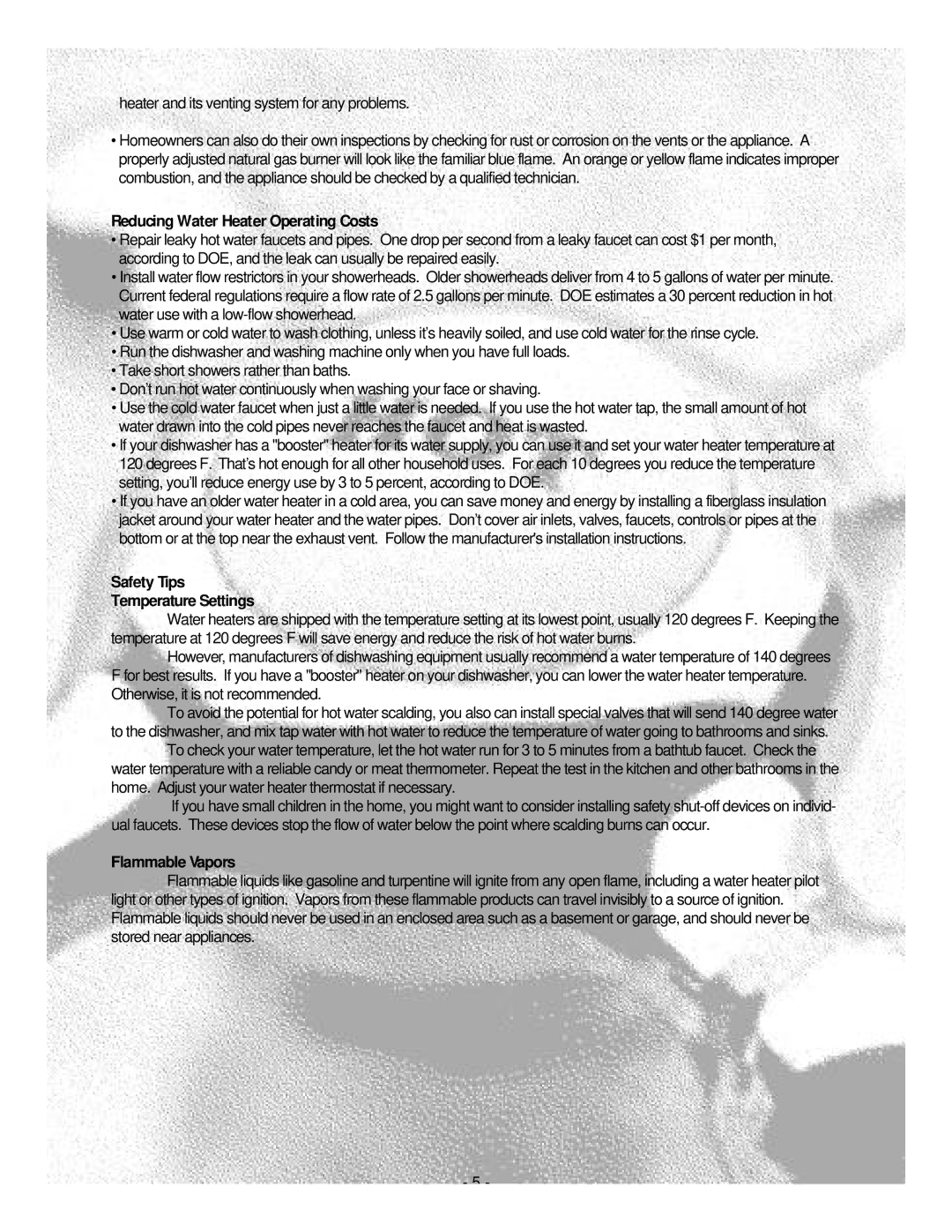Natural Gas Water Heaters specifications
Maytag Natural Gas Water Heaters are engineered to provide reliable and efficient hot water solutions for households. These water heaters are designed with advanced technologies to enhance performance, durability, and energy efficiency, making them a popular choice among consumers.One of the main features of Maytag Natural Gas Water Heaters is their high energy efficiency. Many models are equipped with a high-efficiency gas burner, which helps to reduce energy consumption while providing quick hot water recovery rates. This not only lowers utility bills but also minimizes environmental impact by reducing greenhouse gas emissions associated with heating water.
Another significant characteristic of Maytag water heaters is their robust construction. These units are built with commercial-grade components, ensuring long-lasting performance and reliability. The use of durable materials, such as glass-lined tanks, helps to resist corrosion and scale buildup, extending the life of the heater.
Maytag incorporates advanced technologies in their natural gas water heaters, including digital thermostats and electronic ignition systems. The digital thermostat allows for precise temperature control, ensuring that the water is maintained at the desired temperature while maximizing energy savings. The electronic ignition system eliminates the need for a pilot light, improving safety and reducing gas consumption.
Safety is also a priority in the design of Maytag Natural Gas Water Heaters. Many models come equipped with safety features such as a temperature and pressure relief valve, which helps prevent overheating and excessive pressure build-up, and flame safeguard systems that monitor the burner operation. These features contribute to peace of mind for homeowners.
Additionally, Maytag offers various capacities and sizes, catering to different household needs. From compact models ideal for apartments to larger units suitable for bigger families, there is a Maytag water heater to fit every requirement.
In conclusion, Maytag Natural Gas Water Heaters stand out for their energy efficiency, durable construction, advanced technology, and safety features. With a solid reputation for performance and reliability, these water heaters present an excellent option for those seeking to invest in a quality water heating solution for their homes.

